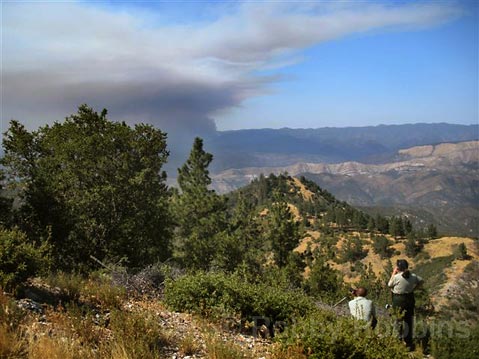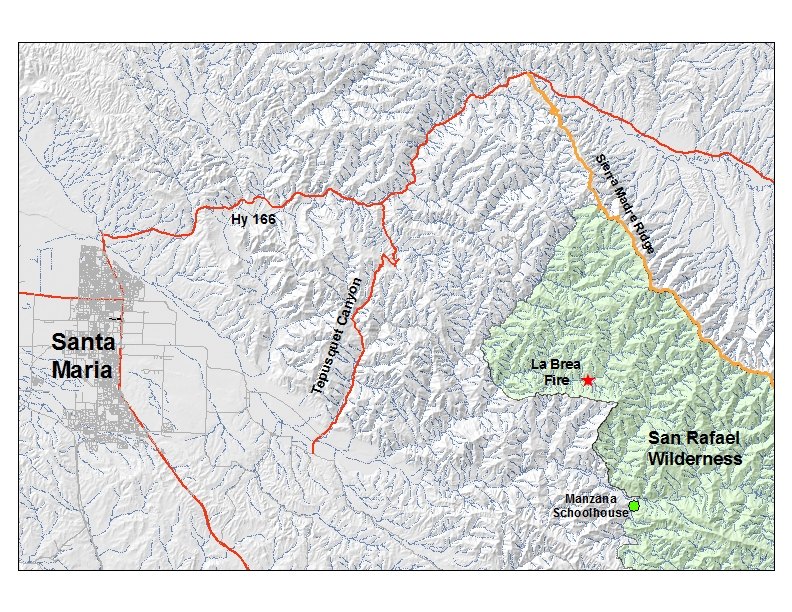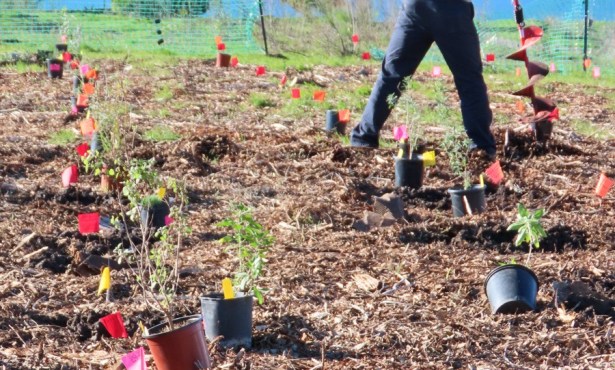Fire Breaks Out in La Brea Canyon
Flames Spread Rapidly in Upper La Brea Canyon Area

At 2:48 p.m. a fire broke out in the upper part of La Brea Canyon, a remote part of the San Rafael Wilderness. “The fire is located about 1.5 miles due south of the Sierra Madre Ridge in an area near Owl Canyon,” Capt. Vince Agapito, of the Santa Barbara County Fire Department reported. “This is extremely rugged country, with few roads. There are air tankers en route to the location and, until hand crews can be moved into the area, most of the containment efforts will be directed from the air.”

Almost exactly a year ago, three smaller brush fires burned through several hundred acres of chaparral in a nearby area. “Those were started by lightning,” Agapito added, “but we don’t have any reports yet of what caused this one.”
What is of concern to fire officials is the speed with which the flames spread. Within hours La Brea Fire had increased in size from less than a hundred acres to more than 1,000 acres in size. “We are concerned that if the winds begin to pick up that this become an issue for those that live west of the fire line in Tepusquet Canyon.”
Currently the fire perimeter is estimated to be 10 miles from this area but that could change if the wind should shift. The area is the one remaining portion of the San Rafael Wilderness that escaped the Zaca Fire two summers ago.
Currently, winds are pushing the fire to the southwest down into La Brea Canyon and diagonally toward Tepusquet. “Unless the winds shift in a more westerly direction, the Tepusquet area should be safe,” fire information officer Maeton Freel reported. “There has also been quite a bit of fuels management work in the areas between the fire and this area as well, and that should help.”
Incident Commander Jamie Copple of the Santa Lucia District of Los Padres Forest requested and received extensive air support. In addition to four helicopters, there are 10 air tankers and 14 hand crews on the scene. “The fire was extremely active this afternoon with high winds,” Freel said, “and we’re making every effort to slow it down.”
Terrain is the biggest thing crews will deal with tomorrow. The country is extremely rugged, with only one narrow dirt road that can be used for access from Tepusquet on the west flanks and the Sierra Madres on the north.



